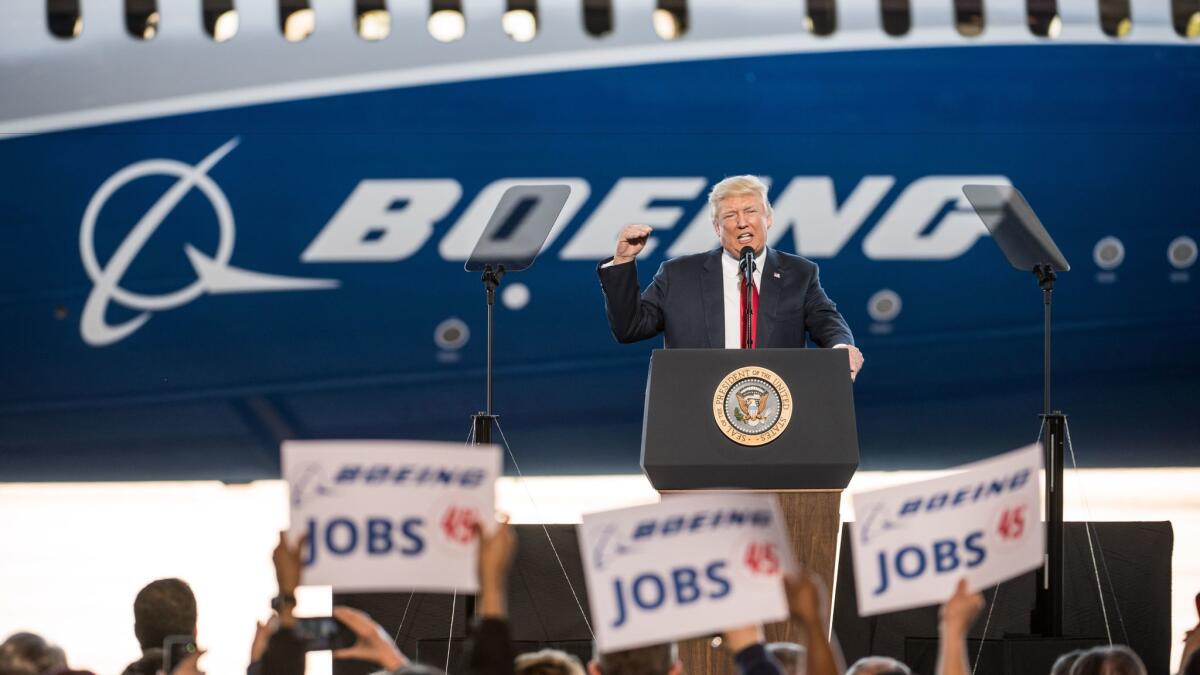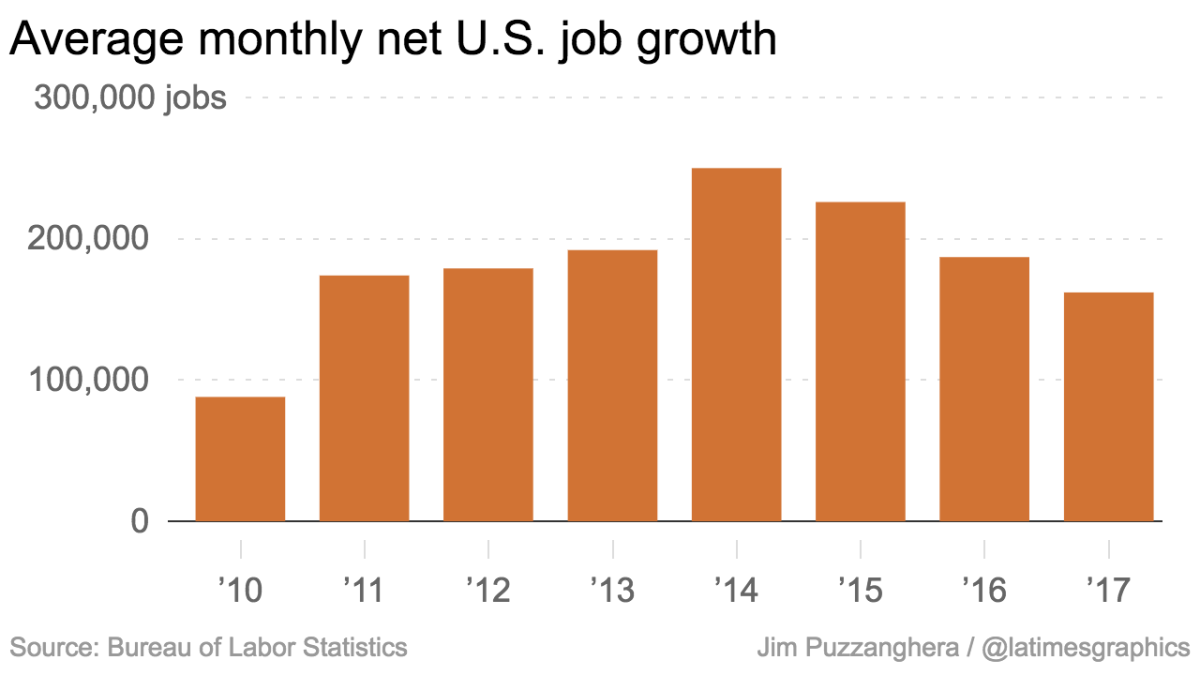Trump touts âgreat jobs numbersâ that arenât actually so great

Trump said in a tweet that âat some point the Fake News will be forced to discuss our great jobs numbers, strong economyâ and other successes of his administration.
From February through May â the latest data available â the U.S. economy has created 594,000 net new jobs, according to the Labor Departmentâs Bureau of Labor Statistics. Thatâs fewer than the 659,000 created during the final four months of the
So far, 2017 is on track to produce the fewest net new jobs in seven years.
Although the Bureau of Labor Statistics adjusted its figures for seasonal disparities, such as the effects of holidays, weather and school schedules, some would argue that a better comparison would be February through May of 2016.
But the numbers under Trump fall short there too, as the economy added 658,000 jobs during that period.
So if there have been âgreat jobs numbersâ under Trump, then they were even greater under President Obama.
Economists have described job growth this year as solid.
âI donât know that theyâre great in the context of the recovery, but theyâre certainly more than adequate. Respectable perhaps,â Gary Schlossberg, senior economist at Wells Capital Management in San Francisco, said of the recent jobs numbers.
The recovery from the Great Recession is now more than 8 years old â unusually long for an economic expansion â and job growth is naturally slowing, he said.
The average of 162,000 net new jobs a month so far this year is off last yearâs figure of 187,000.
At the current pace, the U.S. would add about 1.9 million jobs in 2017. It would be the first time since 2010 the figure was below 2 million.
That would continue a downward trend since the economy added nearly 3 million net new jobs â an average of 250,000 a month â in 2014 in the best year of labor market growth since the late 1990s.

It generally takes businesses several months to turn a decision to hire into new jobs, so Trumpâs influence might not be reflected in the first few jobs reports of his presidency.
Still, that didnât prevent Trump administration officials from touting Februaryâs strong job growth. White House Press Secretary Sean Spicer was so eager to trumpet the 235,000 net new jobs created (since revised down slightly to 232,000) that he broke an obscure federal rule by commenting on the data within an hour of its official release.
Trump has tried to start the clock on his economic influence with his election in November, which led to a jump in consumer and business confidence readings.
On June 1, Trump said that since election day the economy âis starting to come back, and very, very rapidly.â
âWeâve added $3.3 trillion in stock market value to our economy, and more than a million private sector jobs,â he said during a White House speech announcing the U.S. was withdrawing from the Paris climate change accord.
He was correct. From November through April, the figures available at the time, U.S. businesses added 986,000 net new jobs. The figure was higher when he spoke, before the Bureau of Labor Statistics revised down job growth for March and April the next day.
But that private-sector job growth was less than the 1.16 million the sector added from November 2015 through April 2016.
The
But the decline in May was largely for the wrong reason â about 429,000 people dropped out of the labor force.
During the presidential campaign, Trump criticized the declining unemployment rate (it had been 10% in October 2009) as not reflecting the true state of the economy.
In a speech in August, Trump called the then 4.9% unemployment rate at the time âone of the biggest hoaxes in modern politicsâ because it didnât take into account the number of people who had dropped out of the labor force.
Twitter: @JimPuzzanghera
UPDATES:
12:30 p.m.: This article was updated with more details about the job figures.
9:45 a.m.: This article was updated with comment from Gary Schlossberg of Wells Capital Management.
8:45 a.m.: This article has been updated with a chart showing average monthly job growth and additional analysis.
This article was originally published at 7:50 a.m.
Inside the business of entertainment
The Wide Shot brings you news, analysis and insights on everything from streaming wars to production â and what it all means for the future.
You may occasionally receive promotional content from the Los Angeles Times.








